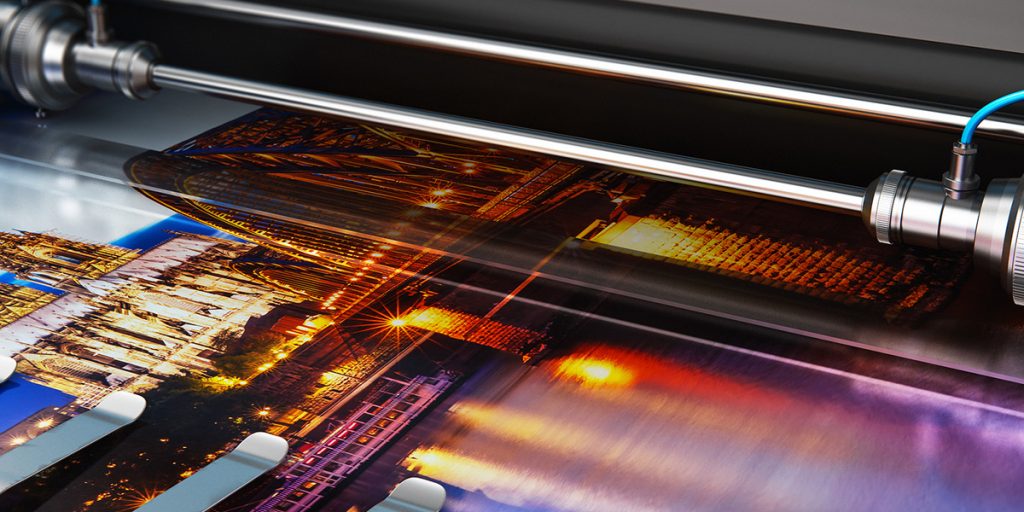Large Format Printing Methods: Eco Solvent, UV Inkjet and Dye Sublimation

Even though eco solvent, UV inkjet and dye sublimation printing methods all offer a great deal of versatility, it is important to know the differences between these different print methods. Each of these print methods serves their purpose in different ways and in the right time and place. Deciding when and where to use each type of print method can be confusing however, so that’s why we’re here to help!
Keep reading to learn more about the differences between eco solvent, UV Inkjet and dye sublimation printing and when you should use each to produce the best print piece for your next project.
Eco-Solvent
Eco-solvent inks have their colors suspended in a mild biodegradable solvent which means the ink has almost no odor because it does not contain a large number of volatile organic compounds.
The lack of any type of strong smell is a big selling point as some solvent inks produce a strong smell during the printing process. This can result in an odor being left on the printed material. Plus, the placement of the printer can make the smell be an issue for the staff. In addition, the smell of solvent inks can prevent them from being used on materials that will be used or displayed indoors.
The lack of volatile organic compounds means eco-solvent printing cartridges are not as damaging to printer components which reduces the need to perform full system cleans as often as solvent inks require. It should be noted that eco-solvent printing requires a greater amount of heat to dry the printed materials which can limit the number of substrates used by the printer. It is also not as durable as solvent inks so it is an ideal choice for materials with a lifespan of a few years or less (think billboards, wall graphics, and vehicle wraps).
UV Inkjet
UV printing uses ultraviolet lights to cure or dry ink while it is printing. While the printer is distributing the ink on the substrate, special UV lights follow behind to instantly dry the ink. Since the UV lights can immediately cure any printed ink, the wet ink does not have an opportunity to spread out so there is a finer amount of detail. These inks are also weather-resistant, do not fade as much, and the curing process is environmentally friendly thanks to less heat and odors and fewer VOC’s. Our Durst UV inkjet printer can be used with most substrates up to 2” thick including nontraditional materials like acrylic, aluminum, wood, ceramics, glass, metal as well as flexible materials such as papers and Vinyls.
Dye Sublimation
Dye sublimation uses heat to transfer ink to white fabric. In turn, this allows full-color graphics to permeate the fabric and become part of the fibers. This printing process uses special inks that are first printed onto a carrier sheet. A Calendar device will heat the ink and cause it to sublimate AKA skip the liquid form and move directly into a gaseous state. After the ink hits the media, it goes from a gas to a solid and results in a full-color image. Dye sublimation works best on substrates such as tents, flags, table throws, fabric banners, boards, and sail signs.
Need help determining which print method is right for you? Are you ready to go with your print project? If so, Graphic Solutions Group can help!
Contact Us for More Information
Are you looking for a printer who can help you meet your deadlines?
Then your in the right place! Have any questions or concerns we would love to hear from you.
Please submit your information in this form and a sales professional will reach out to you.
Want to Speak to a Sales Representative? Call 770-424-2300






